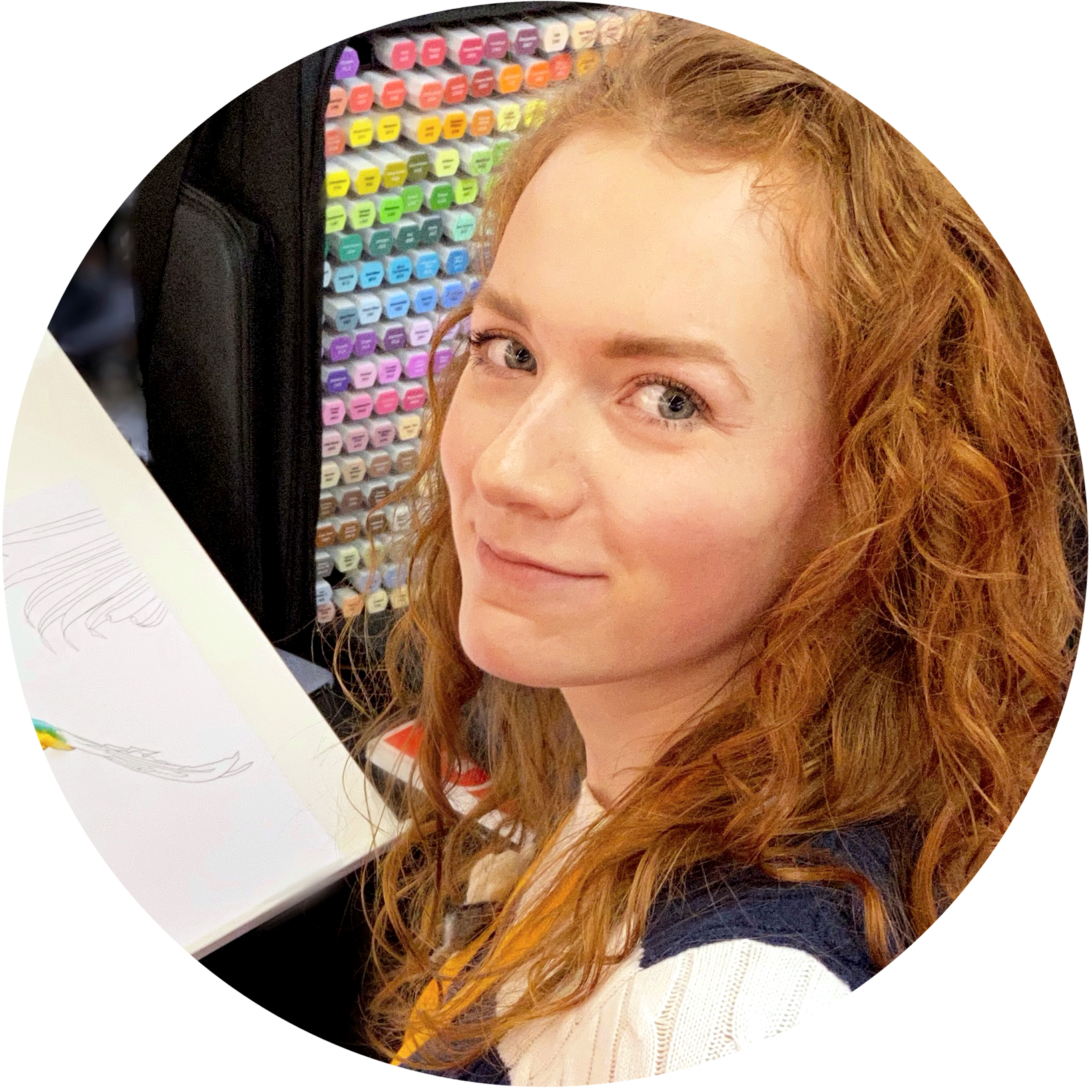5 Ways to Create Art Series
Don’t have time now? Pin for later!
How many times have you heard this advice?
“You should create artworks in a series!”
Art galleries are more willing to exhibit art series rather than separate pieces. Art series look great in a portfolio and attract an audience on social media. So there’s no reason not to do it. BUT as always, it’s easier said than done. The bottleneck is where to begin?
You may think you’re the only one struggling with this issue. You can’t be more wrong! You are very far from being alone, as so many artists are fighting this battle. Right now, I’m also puzzled with this question: where to begin?
When in doubt, look at masters! Art series are nothing new. Artists before us have worked this way. We can’t ask old masters, but we can let their work speak for them.
There’s probably nobody as famous for his art series as Claude Monet. He rarely did separate pieces. Instead, he deliberately chose to create series after series of paintings.
So we can take the first approach to art series from Monet.
1. Common subject
It’s hard for me to choose only one series from all Monet’s work. If I had to single out one of them, then I’ll go with Rouen Cathedral. What fascinates me is that the artist used the same angle, only the lighting was different. However, look at the diversity he was able to achieve!
Monet’s approach to this series may be too restrictive for you. Then look at his world-famous water lilies. The subject stayed the same, but view angles varied a lot.
Not everyone can get as fascinated with one subject as Monet did. Luckily, it’s the only way to make art series.
2. Common theme
Art series can be connected by a common theme. Take, for instance, Mikhail Vrubel’s Russian fairy-mythology series. He took well-known tale and folklore characters that existed mainly as verbal descriptions and shaped their appearances to create memorable representations. There’s no apparent connection between the subjects unless you know who they are.
From the left Bogatyr, The Swan Princess (Swan Czarevna), Pan (fragment) by Mikhail Vrubel
A theme is more flexible, with fewer boundaries and restrictions compared to one subject.
A very different approach was used by Pablo Picasso.
3. One colour scheme
Picasso’s series grew so big that they are referred to as periods, his famous Blue and Rose Periods. The Blue Period is characterised by a cool palette of various blues and sombre mood. Whereas in contrast, Rose one has an orange and pink scheme with brighter blue hues that gives paintings a lighter, more cheerful spirit.
Blue Period (from the left): The Old Guitarist, The Soup (fragment), Melancholy Woman by Pablo Picasso
Rose Period (from the left): Mother and Child, Acrobat and Young Harlequin (fragment), Mother and Child, Acrobats by Pablo Picasso
This approach to series is very sophisticated, as unity happens visually, bringing potentially very diverse subjects and themes.
4. Exploration of technique
At first glance, Arkhip Kuindzhi’s night light series don’t differ that much from Claude Monet’s work. Both artists painted light and explored its properties. However, whereas Monet pursued versatility and colourfulness of light, Kuindzhi focused on one aspect – glow. He wanted to make his canvases shine, which wasn’t possible only by using high contrast, so he went further into the chemistry of paints. Some of his contemporaries believed that there were lamps behind his paintings, so astonishing the effect was in person.
From the left fragments of Moonlight Night on the Dneper, Elbrus in the Evening, Daryal pass. Moonlight Night by Arkhip Kuindzhi
So Kuindzhi wasn’t pursuing a subject or theme but was passionate about the technical aspect. He wanted to achieve this glowing effect and experimented with paints to make it happen. The rumour has it that no one else but his friend Mendeleev (the same scientist who created the periodic table) let a hand in it. Sadly, Kuindzhi carefully guarded his secret technique and never disclosed it. For now, we can only guess what magic he used.
This technique approach to art series is the most complex but fascinating one. Attempting to push a medium to its limit and reach a new level is a great way to master the material and expand your boundaries. The only caveat is that such art series are harder to present if the subject varies considerably. However, it doesn’t mean it’s not worth trying.
5. Common purpose
The most familiar example is a series of book illustrations. What immediately comes to mind is a children’s fairy tale where artworks cover the spread from edge to edge. Such illustrations can follow a character or explore the book world. However, they can also be abstract, as these illustrations by El Lissitzky. He masterfully used typography to add visuals to a poetry book by Vladimir Mayakovsky.
Spreads from the poetry book For the Voice written by Vladimir Mayakovsky, illustrations and design by El Lissitzky
These illustrations can’t exist without the poems they represent. Together they form one continuous story.
I hope now you see how versatile art series can be. You don’t have to limit yourself to drawing only the same subject over and over again unless you want to. Maybe you’re passionate about a theme or technique, or perhaps you are driven towards a particular colour scheme. If neither of these options speaks to you, no worries! Come up with a common purpose all your artworks can serve. Be it a book, a board game, or a home decor collection.
Tell me, what is the next art series you’ve envisioned? Do you have a dream art series you didn’t dare to create before?
P.S. If this post helped you, then join ColourTamers for more useful content.
Keep creating!
Yours,
Tatiana
You might also enjoy
Hello!
My name is Tatiana Kuvaldina.
I am a colour expert.
My purpose is to help creatives like you to build their confidence one colour exercise at a time.
Let’s talk more on Instagram
Find me @tkuva_illustrates











































